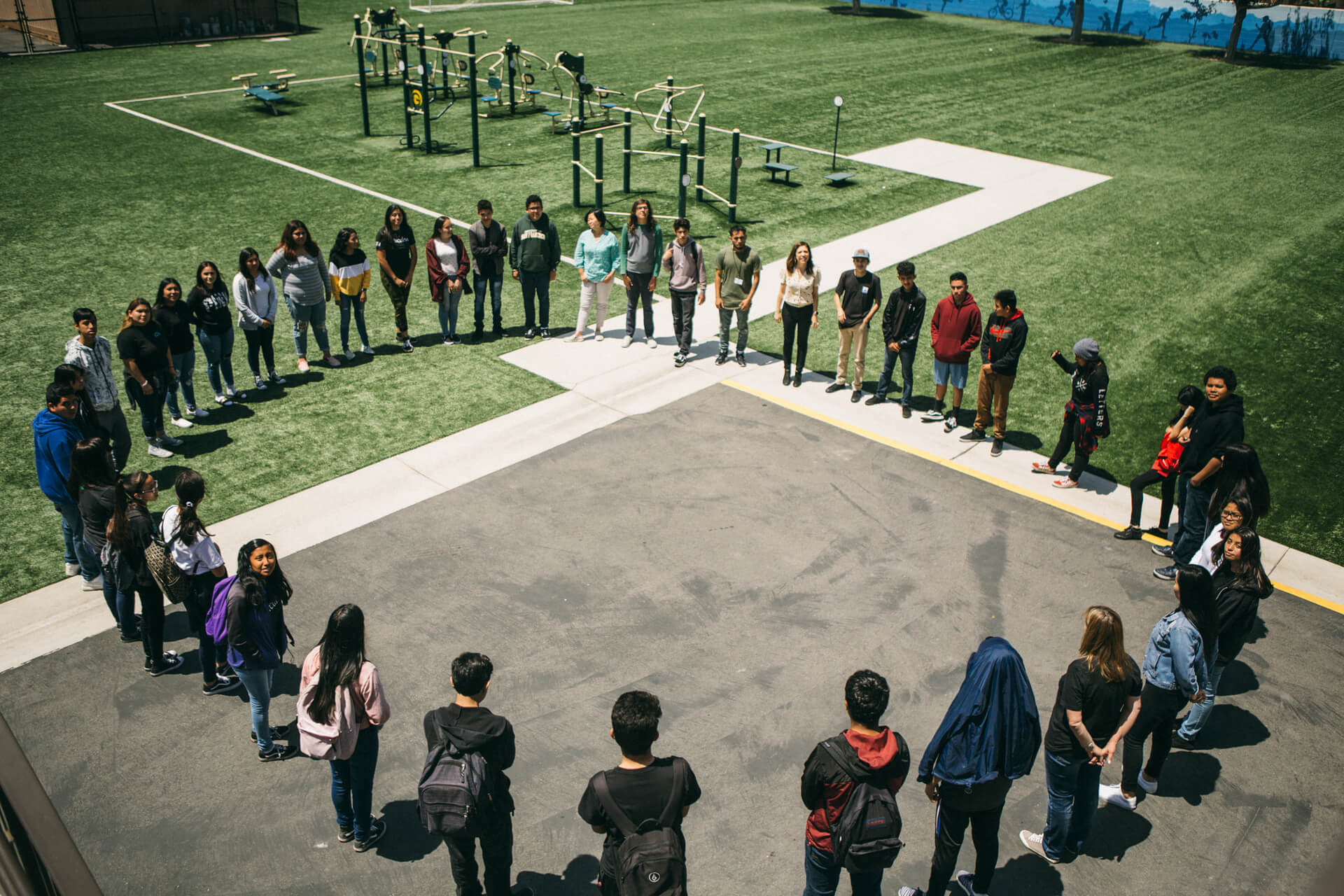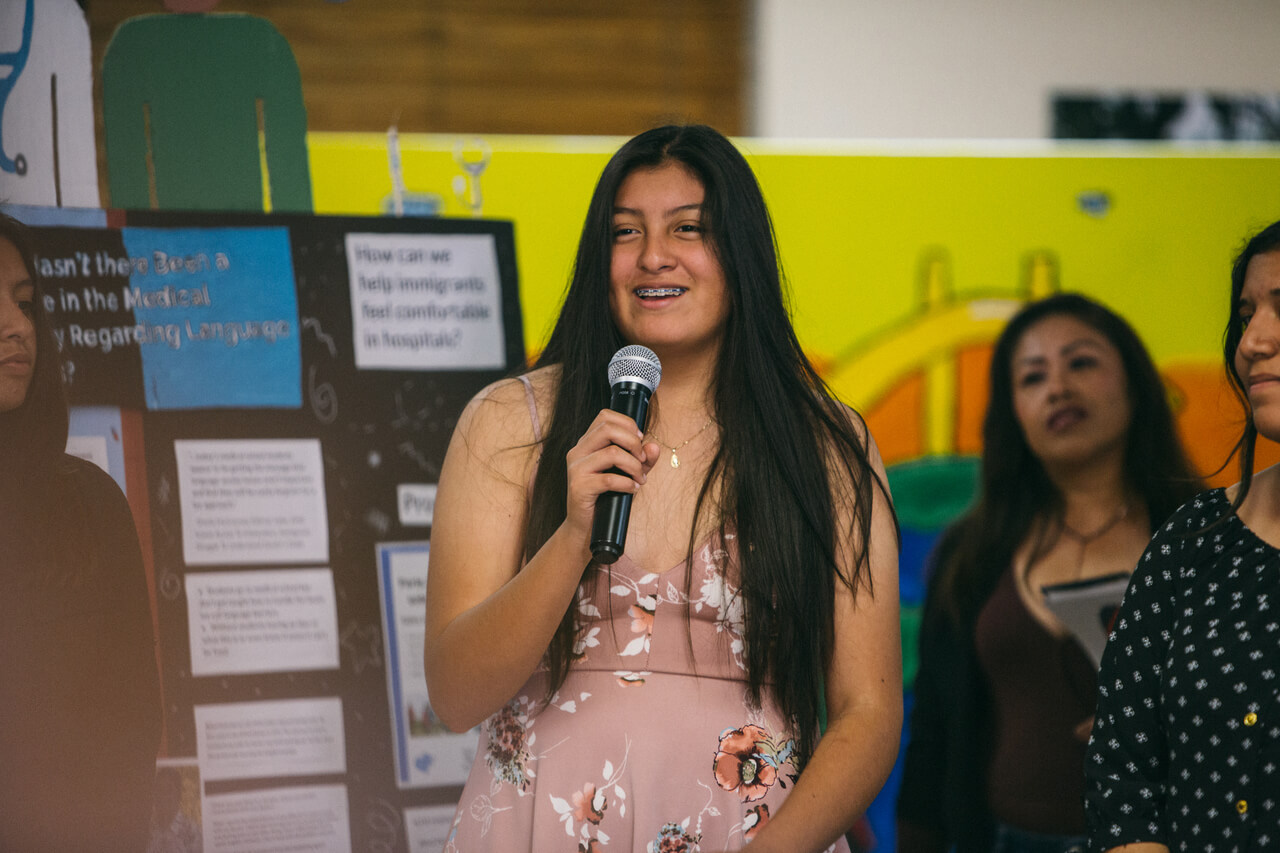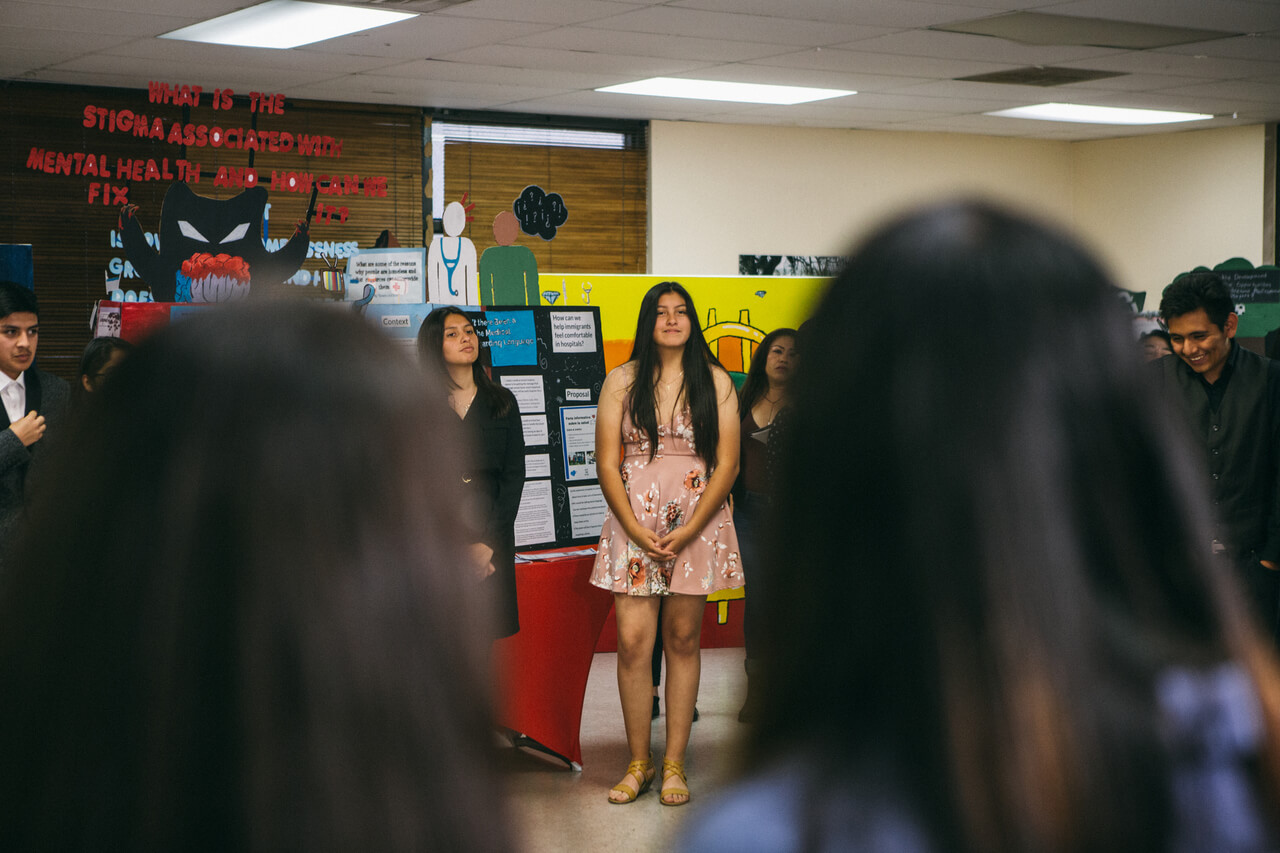How Active Listening In The Classroom Develops Empathy
What does it mean to truly listen to someone? At Círculos, an XQ school in…

What does it mean to truly listen to someone? At Círculos, an XQ school in Santa Ana, California, students approach this abstract question through a daily, concrete activity: forming circles. Each day, students meet in circles to discuss their personal goals, victories, and setbacks. Teachers also create circles of students during class to support group discussions about academic content.
These types of circles aren’t just about sharing different perspectives or experiences. They encourage active listening. Students, like adults, often think they’re listening to each other when they’re actually distracted or not focusing on key details and experiences. Active listening teaches them to listen to each other more deeply and closely for true understanding. Through building these listening skills, students learn to better empathize with each other and create a stronger community. Círculos founder Jessica Salcedo explained, “Circles provide an intentional space for all students to be seen and heard—to develop their voices and identity in relationship to each other, their community, and their learning.”
Active listening is often used in counseling or therapy, but it’s also a powerful way to promote learning in the classroom. We know that meaningful, engaged learning happens when students can set aside biases and preconceived notions to really listen to their teachers and to each other. Active listening promotes this openmindedness and encourages another XQ Design Principle: caring, trusting relationships. That’s because teachers and students learn to see each other as full people.
What is Active Listening?
Active listening means listening to someone knowing the goal is to understand, respond to, and remember what they’re saying. In active listening, the listener sets aside any judgments to truly focus on what the other person has to say.
Active listening is a powerful way to show someone that their perspective and lived experiences matter. It also develops empathy; hearing another person without judgment helps the listener move beyond differences, and see other people more fully.
In practice, active listening examples include:
- Letting the person speak without interrupting
- Asking questions and summarizing what the person is saying, making sure you understand
- Giving nonverbal cues, like nodding and making eye-contact
These are among eight tips provided by the Texas Computer Education Association for promoting active listening in the classroom.

What’s the Difference Between Active and Passive Listening?
Active listening requires intention and effort. It means consciously setting aside distractions or judgments to focus on understanding the other person. It’s the opposite of passive listening, where a person may be physically present but not fully engaged in a conversation.
Passive listening is often obvious: for example, a person scrolling through their phone in the middle of a conversation. But it can also be more subtle. Imagine a teacher talking to a student about disruptive behavior without asking deeper questions about how the student is feeling and experiencing the classroom; or a student debating a topic with a classmate and only thinking about their own response, rather than listening to what their peer has to say. Active listening prevents conversations from being misunderstood, or people from being unheard.
Why is Active Listening in the Classroom Important?
In the classroom, active listening creates an environment of collaboration where everyone’s perspective and experience matter. This holds true for both teachers and students.
One of our core XQ Design Principles is youth voice and choice: the belief that all students should have the opportunity to develop their identities and perspectives as learners, knowing that their voices have value. By actively listening to students, teachers show students that their thoughts and experiences matter. They also promote equity in the classroom. Equity in education means that every student gets what they need in a manner that best suits them. Too often, inequitable practices happen when adults in power assume they know what students need without giving students the chance to advocate for themselves.
For students, active listening promotes meaningful, engaged learning, as they develop curiosity and become more intentional about understanding assignments and lessons. This also promotes collaboration in the classroom by teaching students how to listen to one another without bias, and build on each other’s perspectives.
The Benefits of Teaching Students How to Listen Actively
Students need more than academic knowledge to succeed in college, career, and life. They also need the skills to apply what they know in different situations: to listen and communicate with others, to take in new perspectives, and to set aside personal biases. These active listening skills are sorely needed at a time when social media makes it too easy for people to demonize those with different ideas because they don’t have to actually talk to each other, see each other in person, and find common ground.
Improved Communication Skills
Active listening teaches students how to communicate effectively with others because it builds trust. When someone knows they are being heard, they are more likely to express themselves openly and honestly. This openness enables communication on issues that matter most—whether it’s a controversial political issue impacting a community or an interpersonal issue between two people on a team. One of our XQ Learner Outcomes is Generous Collaborators: self-aware team members who value the expertise of others and seek out diverse views. Active listening promotes self-awareness in communication by asking the listener to set aside their own judgments and truly listen to what another person has to say.
Increased Academic Understanding
Active listening encourages students to appreciate nuance. They’re taught to ask questions when receiving a new idea, perspective, or piece of knowledge. That’s also the idea behind another XQ Learner Outcome, Holders of Foundational Knowledge. It means being curious—to constantly seek out new knowledge and perspectives, and to seek full understanding before evaluating a new idea. By prioritizing understanding and questioning before drawing conclusions, active listening builds this learning skill.
The Relationship Between Active Listening and Empathy
So much of what high school should instill in students—building relationships, identifying community needs, helping make the world a better place—comes down to empathy. The Greater Good Science Center at Berkeley defines empathy as “the ability to sense other people’s emotions, coupled with the ability to imagine what someone else might be thinking or feeling.”
For teachers wondering how to teach this abstract skill to students, active listening is a powerful, tangible place to start. Active listening begins from a place of attention—paying attention to the other person’s words and body language in order to understand what they’re saying and to feel their emotions. Ultimately, this listening enables students to empathize deeply with their peers and community members, which can then lead to action as students consider how to apply what they learn in school to solve problems and improve their communities.

Strategies for Teachers to Promote Active Learning in the Classroom
At a broad level, classrooms that prioritize active listening tend to share some approaches in common.
Student-centered learning
In student-centered learning, students have a say over what, when, and how they learn. Committing to a student-centered approach requires teachers to commit to active listening when communicating with students, to make sure their voices and desires are heard and implemented in the classroom.
Project-based learning
In project-based learning, students gain knowledge and skills through taking on meaningful, authentic challenges. These projects are often collaborative, requiring students to work with each other and alongside community partners. By providing this real-world context for learning, projects help students learn the importance of active listening when working with others, and how the skill will help them achieve success in real-world challenges.
Culturally responsive teaching
Culturally responsive teaching means incorporating students’ knowledge, expertise, and lived experiences into classroom learning so that students can better connect with the material. This approach promotes active listening: to design learning around student experiences, teachers first have to listen actively to students to understand who they are and where they come from.
Below are two examples of activities that incorporate these strategies through active listening.
Restorative justice listening circles
As the opening example from Círculos shows, circles are a powerful tool to teach active listening. They can also help solve problems in a community and create an opportunity for healing when norms are violated—a practice called restorative justice. Born out of indigenous societies from around the world, restorative justice listening circles emphasize listening and community.
Teachers looking to implement restorative justice listening circles in their classroom can consider these steps:
- Begin with an opening ceremony that sets the topic for discussion and introduces group norms
- Use a talking piece that students can pass around to indicate when it’s their turn to speak
- Create a set of community agreements to ensure everyone feels heard
- End the discussion with a closing ceremony
Documentary projects
Documentary film can be a powerful medium through which to teach listening skills to students. Through making documentaries, students can practice interviewing—a kind of active listening— as well as creating a final product designed to highlight participants’ stories and perspectives.
At Iowa BIG, an XQ school in Cedar Rapids, Iowa, students used documentary filmmaking to listen to and highlight community perspectives around gun violence. Students Callie, Sadie, Kianna, and Kayla wanted to not only bring awareness to the issue of gun violence in their community, but also to begin conversations that would spark solutions. They decided to create a documentary—Gun Violence Documentary-The Courage Not To—that interviewed students, police, and community members about the causes and effects of gun violence and potential solutions.
The benefits of this project were far-reaching. Through conducting interviews, Callie, Sadie, Kianna, and Kayla developed their own active listening skills. They learned how to ask good questions, listen deeply, and navigate hearing from community members with conflicting perspectives.
The project also empowered students in the community by showing them their perspectives mattered. Kayla explained, “[A student] that we featured in the video reached out and said thank you …because not that many [people] talk about how gun violence affects young people.” Through actively listening to their peers, Kalya, Callie, Sadie, and Kayla helped other students gain agency and awareness of a key community issue.
This example shows how active listening empowers students as learners, communicators, and community members. By teaching students to seek understanding in their relationships and in their learning, educators can empower students to empathize with others and feel connected to their larger communities and inspire students make a difference in the world around them. Follow our work for more on empowering students in the classroom.
For more on active listening examples and research check out:
The Value of Listening from Harvard’s Graduate School of Education
The Value of Listening in the Classroom: How to Teach Your Students Active Listening, from Waterford.org
Photo of Circulos students and teachers at top by Gari Askew









